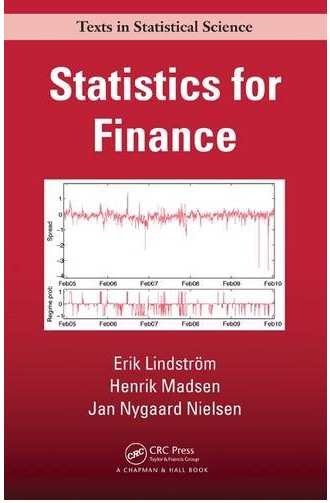Statistics for Finance

文件大小:未知
级别评定:★★★★★
添加时间:2016-02-14 09:49:51
最后更新:2016-02-14 09:56:17
下载积分:0分 (只有会员文件下载时才需要相应积分验证)
总浏览:
总下载:77
发布人:george15135
- 如果您发现该资源不能下载,请在本站论坛提出,管理员会及时处理。
- 未经本站明确许可,任何网站不得非法盗链及抄袭本站资源。
- 本站资源均为网友提供交流,仅供教学、研究使用,请下载后24小时内自行删除。
资源简介
Statistics for Finance
Erik Lindström, Henrik Madsen, Jan Nygaard Nielsen
April 16, 2015 by Chapman and Hall/CRC
Textbook - 384 Pages - 63 B/W Illustrations
ISBN 9781482228991 - CAT# K22604
Series: Chapman & Hall/CRC Texts in Statistical Science
Features
- Provides material for courses in financial econometrics and financial mathematics
- Describes the modern theory of financial derivatives from an empirical point of view, focusing on identification and estimation theory
- Presents the main ideas of proofs, avoiding tedious technical details
- Connects the concepts through examples, case studies, and cross references throughout the book
- Includes end-of-chapter problems that assess students’ understanding of both simple and complex mathematical concepts
Solutions manual and figure slides available upon qualifying course adoption
Summary
Statistics for Finance develops students’ professional skills in statistics with applications in finance. Developed from the authors’ courses at the Technical University of Denmark and Lund University, the text bridges the gap between classical, rigorous treatments of financial mathematics that rarely connect concepts to data and books on econometrics and time series analysis that do not cover specific problems related to option valuation.
The book discusses applications of financial derivatives pertaining to risk assessment and elimination. The authors cover various statistical and mathematical techniques, including linear and nonlinear time series analysis, stochastic calculus models, stochastic differential equations, Ito’s formula, the Black–Scholes model, the generalized method-of-moments, and the Kalman filter. They explain how these tools are used to price financial derivatives, identify interest rate models, value bonds, estimate parameters, and much more.
This textbook will help students understand and manage empirical research in financial engineering. It includes examples of how the statistical tools can be used to improve value-at-risk calculations and other issues. In addition, end-of-chapter exercises develop students’ financial reasoning skills.
